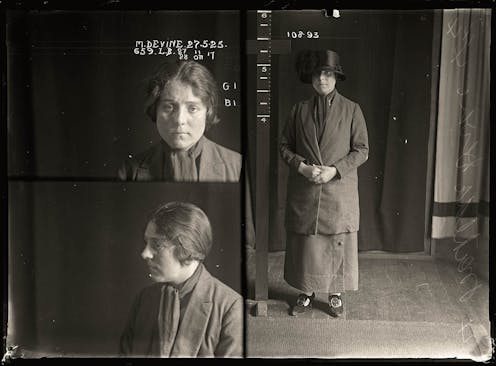In Iris, Fiona Kelly McGregor recreates the criminal underworld of Depression-era Sydney
- Written by Susan Sheridan, Emeritus Professor, Flinders University

It’s spring 1932 and Sydney is in the grip of the Great Depression. In the narrow terrace-lined streets and back lanes of inner Sydney, there are illegal two-up games and off-course betting. Sly grog shops are open after the official pub closing time of 6pm, offering beer, spirits and drugs. Police raids are usually pre-arranged, on these venues and others, such as Black Ada’s Academy School of Dancing, where homosexual men can meet under the guise of taking ballroom dancing lessons with the women who work there.
Most of the prostitutes in the area are “run” by one of the two notorious vice queens of the period, Tilly Devine[1] in Darlinghurst and Kate Leigh[2] in Surry Hills. The razor gang wars between the two are finally over and there is a period of relative quiet, punctuated by the odd shooting.
Review: Iris – Fiona Kelly McGregor (Picador).
Enter Iris Webber, a country girl from Glen Innes, more recently from Hay Women’s Prison, where she has been incarcerated for wounding her husband with a shotgun as revenge for leaving her and for owing her mother money. Arriving in “the big smoke” at Central Station, which seems to Iris “like a cathedral, light streaming in through its high vaulted roof”, she is intrigued by what she observes:
a boy selling shoelaces spread out on cardboard, two women in pencil skirts. An old man staggered past with his pants falling down, bronza on full display. Nobody seemed to care in the slightest […] All along the gangplank men held signs asking for work. A woman sat on a butterbox with a bawling baby on her lap and a toddler next to her, muttering Spare change?















